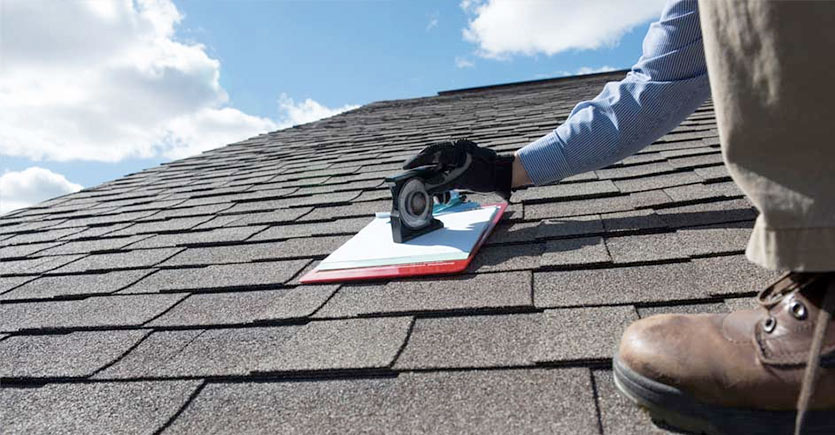Find the best Perrysburg Roofer for professional roof installation services.
Find the best Perrysburg Roofer for professional roof installation services.
Blog Article
Exactly How to Evaluate Different Roofing Alternatives for Your Building Requirements
Evaluating roofing choices for your building requires a detailed strategy that takes into consideration various elements such as the planned use the framework, regional climate problems, and product qualities. It is necessary to weigh the benefits and drawbacks of different roof covering types, from asphalt shingles to steel and clay tiles, while also factoring in preliminary prices and long-term upkeep. In addition, recognizing power efficiency and visual allure can influence your decision. As you ponder these considerations, one concern remains: which factors will ultimately guide your choice for a lasting and visually pleasing roof covering remedy?
Analyzing Your Structure's Demands
To properly examine roof covering options, begin by thoroughly assessing your building's demands. Beginning by thinking about the structure's meant use, as various frameworks might necessitate differing roofing specifications. Property roofs frequently focus on aesthetics and insulation, while commercial buildings might focus on sturdiness and load-bearing capability.
Following, evaluate the neighborhood environment problems that will influence roofing performance. Variables such as temperature fluctuations, rainfall degrees, and wind patterns can influence product option and design. A roofing system that excels in a temperate climate might not execute as well in locations susceptible to hefty snowfall or severe heat.
In addition, assess the structural integrity of your structure. Ensure that the existing framework can sustain the picked roof materials, especially if thinking about much heavier choices. It is also crucial to evaluate any kind of neighborhood building regulations or policies that might dictate certain needs for roofing systems.

Contrasting Roof Materials
As soon as a thorough evaluation of your building's demands has been finished, the following step includes contrasting various roof covering materials. Each material provides distinctive benefits and negative aspects, making it necessary to align your choice with your certain demands and situations.
Asphalt tiles are extensively recognized for their price and simplicity of installment, making them a prominent choice for domestic structures. On the other hand, steel roof, understood for its toughness and durability, can stand up to severe climate condition however may come with a greater first financial investment.
Clay and concrete tiles supply excellent thermal insulation and aesthetic appeal, particularly for Mediterranean-style architecture, yet they call for a more robust architectural support due to their weight. Timber shakes offer an all-natural appearance and good insulation residential or commercial properties but might require much more upkeep and are vulnerable to fire threats.
Evaluating Cost and Budget
Examining your roof covering choices necessitates a cautious evaluation of cost and spending plan factors to consider. The overall budget plan for a roof project consists of a number of aspects, including product expenses, labor costs, maintenance, and potential long-term savings. It is vital to establish a clear spending plan link before exploring specific roof covering materials, as this will assist the decision-making procedure and assist you prevent overspending.
Begin by obtaining quotes from multiple service providers to understand labor costs in your region. Guarantee that these quotes include all necessary services, such as basics elimination of the old roofing system, installation, and any type of extra attributes, like insulation or ventilation improvements - Roofing Contractor. Next, analyze the price of different roof materials, thinking about both preliminary setup prices and expected life-span

Comprehending Power Performance
Energy efficiency plays a critical function in the option of roofing products and systems, considerably affecting both power intake and general comfort within a building. A well-chosen roofing can improve thermal performance, lowering the demand for home heating and cooling down systems, which consequently lowers power bills and decreases environmental influence.
When assessing roof options, consider materials that show as opposed to soak up warm. Light-colored or reflective roof items can considerably decrease roofing surface temperature levels, causing lower power usage during warm months. Additionally, correct insulation and ventilation are necessary to maximize the energy performance of the whole roof system. Insulation avoids warm transfer, while ventilation alleviates warm build-up in the attic room area.
An additional important aspect is the roof's durability and maintenance needs. Sturdy materials that call for less frequent replacement add to long-term energy cost savings. Additionally, the power efficiency of a roof can also be evaluated via its compliance with recognized sustainability ratings such as ENERGY CELEBRITY or LEED.
Thinking About Aesthetic Charm
A roofing system's aesthetic appeal substantially affects the total appearance of a structure, matching its architectural style and improving curb allure. Sylvania Roofing Contractor. When evaluating roof choices, it is necessary to take into consideration just how the picked material, color, and style will certainly balance with the existing framework and area. A properly designed roofing system can raise even the easiest of structures, changing them into aesthetic focal points
Various roof products offer numerous sites aesthetic top qualities. As an example, traditional shingles might evoke a traditional appeal, while steel roofing can present a modern-day, sleek look. Furthermore, the shade of the roof covering product plays a vital function; lighter shades can make a structure show up even more spacious, while darker tones may create a cozier ambiance.
Additionally, building components, such as dormers and eaves, can improve the roofing system's aesthetic impact. It is a good idea to speak with expert developers or architects to guarantee the chosen roof covering option straightens with the general design intent. Eventually, a roof should not only offer functional benefits yet additionally contribute favorably to the building's aesthetic, mirroring the proprietor's preference and the character of the surrounding environment.
Verdict

Report this page